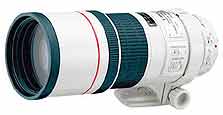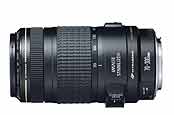Contact Details: Scotch Macaskill, Dirt Road Traders, Currys Post Road, Howick, KwaZulu-Natal, South Africa. Tel: +27 (0)82 578 2329. Privacy: Your privacy is guaranteed. See our Privacy Policy for more. This site accepts advertising and other forms of compensation - see Disclosure and Advertising for details. Site updated: 2022. Copyright © 2002 - 2022 Scotch Macaskill

| ||||||||||
|
||||||||||
|
See Also: |
Canon IS Lenses
 The "IS" designation on a Canon IS lens stands for "image stabilization", a technology aimed at reducing
camera shake or camera movement that result in fuzzy, unsharp photographs.
The "IS" designation on a Canon IS lens stands for "image stabilization", a technology aimed at reducing
camera shake or camera movement that result in fuzzy, unsharp photographs.
Canon IS lenses help eliminate or reduce this camera shake, resulting in sharper, crisper images. Some degree of camera shake is inevitable when hand-holding a camera. The more a photographer's hands tremble when the shot is taken - whether from excitement of the moment, nervousness, or even a hangover - the greater the chance of the picture being unsharp. Even very slight camera shake can cause fuzzy images when using a telephoto lens as this not only magnifies the image, but also the slightest hint of camera movement. Similarly, a slow shutter speed gives more time for camera movement to manifest itself on the camera's digital sensor.
How does IS work?Canon explains that camera shake during exposure causes the lens to move, which in turn shifts the angle of incoming light relative to the optical axis, resulting in fuzzy photos. The image stabilizer unit, comprising a microcomputer and two vibration gyros, detects lens movement and rectifies this by shifting certain optical components within the lens in inverse relation to the lens movement. This maintains the position of incoming light rays on the camera's digital sensor, so helping eliminate blur caused by lens movement. Some camera manufacturers, including Pentax, Olympus and Sony, have opted to combat camera shake with in-camera technology that adjusts the sensor, known as sensor-shift stabilization. The clear advantage of this approach is that the system will work with any lens that fits the camera, so you don't have to buy special IS lenses, which are generally more expensive than non-IS lenses. Canon (and Nikon with its VR system) have opted to incorporate the actual image stabilizer unit within the lenses themselves. The benefits of this approach are high correction efficiency and a stable viewfinder image. Canon produces various types of image stabilizing mechanisms to meet different needs, so each lens gets what suits it best, providing highly accurate correction. Canon IS lenses can compensate for both severe and slight camera shake, so maximizing the potential of the lenses themselves at all focal lengths. Because the image stabilizer makes optical adjustments rather than adjustments to the sensor position, the effect can be seen in the viewfinder. It's a lot easier and more comfortable framing and composing your shot when the image in the viewfinder is stable and free of blur. A steady viewfinder image also assists in focusing as it's easier to place the active auto focus point exactly over the critical area of the image - e.g. your subject's eye -- when the image is stable. This also assists the auto focus sensor in the camera, ensuring you have a better chance of producing sharply focused pictures. When are Canon IS lenses most useful?1. Telephoto shooting -- telephoto lenses magnify the image and are essential tools for wildlife and sports photographers who can't always get close to their subjects. But telephoto lenses also magnify any camera shake. Hand-held shooting at long focal lengths inevitably produces blurry images, even when there's slight camera shake. When you can't use a tripod, monopod or beanbag to keep the camera steady, Canon's IS telephoto lenses allow hand-holding at slower shutter speeds than would otherwise be possible, reducing the chances of blurry images. 2. Low light conditions -- when shooting in early morning, late afternoon, or indoors, the low available light requires slower shutter speeds to ensure correct exposure. Slow shutter speeds and hand-holding don't work well together, as there's more time while the shutter remains open for camera shake to manifest itself. Canon's IS lenses make it possible to get sharp hand-held pictures at shutter speeds up to three or four stops slower than without stabilization, which is a huge advantage when shooting without flash indoors, such as at weddings or concerts. Note, however, that image stabilization only reduces camera movement and has no effect on subject movement. You subject needs to be stationary when using a slow shutter speed if you want the image to be crisp and sharp. 3. Panning at slow shutter speeds -- if you track a moving subject by following it with your camera, you can produce images where the subject is sharp while the background is blurred, creating a dramatic sense of motion and speed. This technique is often used for motor sports, track events, and even wildlife photography. For panning to work best, you need a slow shutter speed (1/30 or less) that blurs the background as you move the camera horizontally in line with your subject. This, however, can also cause unwanted blur from camera shake. When following a subject moving horizontally, there's often some vertical lens movement that also blurs the actual subject. Select Canon IS lenses help overcome this by offering two IS modes -- Mode 1 for both horizontal and vertical movement (used most the time) and Mode 2 for panning, where only the vertical movement is compensated for. History of Canon IS lensesCanon introduced the world’s first interchangeable 35mm SLR camera lens with camera shake compensation in 1995 -- the EF75-300mm f/4-5.6 IS USM lens. Canon has subsequently improved the stabilization performance, resulting in new IS lens designs. In July 2009, Canon announced the development of Hybrid Image Stabilizer which optimally compensates for angular camera shake (rotational) and shift camera shake (linear). Sudden changes in camera angle can cause significant blur in images taken during standard shooting, whereas blur caused by shift-based shaking, when a camera moves parallel to the subject, is more pronounced in macro and other close-up photography. Canon's recently introduced EF 100mm f/2.8L Macro IS USM lens incorporates hybrid IS with angle and shift detection that is highly effective at close focusing distances, allowing photographers to capture macro shots without the need for a tripod. Return to Canon Lens Reports |
|||||||||
|
|
||||||||||